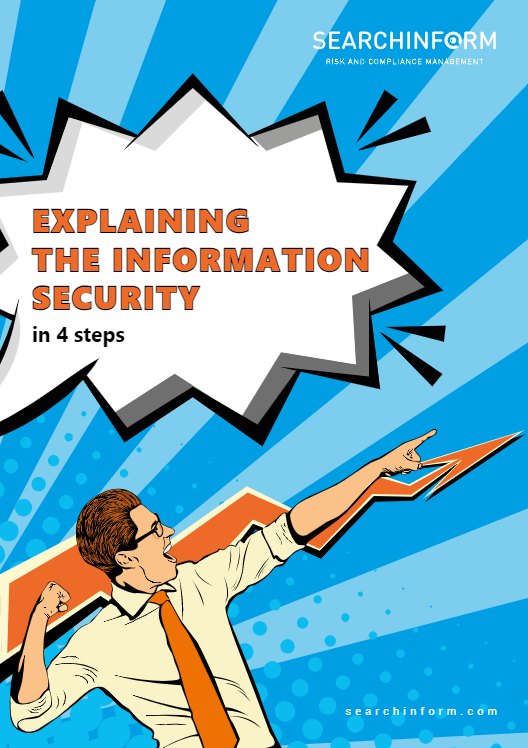Fraud Monitoring Strategies to Protect Your Business
- Introduction to Fraud Monitoring
- Definition and Importance of Fraud Monitoring
- Types of Fraud in Different Industries
- The Evolving Landscape of Fraud
- Challenges in Fraud Detection
- Common Obstacles in Monitoring Fraudulent Activities
- Identifying Sophisticated Fraud Techniques
- The Cost of Fraud to Businesses
- Key Components of an Effective Fraud Monitoring System
- Real-Time Monitoring Tools
- Machine Learning and AI in Fraud Detection
- The Role of Data Analytics in Fraud Monitoring
- Integration with Other Security Systems
- Best Practices for Fraud Monitoring
- Implementing a Multi-Layered Security Approach
- Employee Training and Awareness Programs
- Regular Audits and Continuous Improvement
- Real-World Success: How Leading Organizations Are Winning the Battle Against Fraud
- 1. JPMorgan Chase: Advanced Fraud Detection with AI and Machine Learning
- 2. Tesco Bank: Real-Time Fraud Detection for Online Banking
- 3. eBay: Combating Auction Fraud with Data Analytics
- 4. Anthem Inc.: Healthcare Fraud Prevention with Predictive Analytics
- 5. Vodafone: Subscription Fraud Detection with Machine Learning
- The Future of Fraud Monitoring
- Emerging Technologies and Trends
- Predictive Analytics in Fraud Prevention
- The Role of Regulatory Compliance in Fraud Monitoring
- How SearchInform Enhances Fraud Monitoring
- Overview of SearchInform’s Fraud Monitoring Tools
- Customizable Solutions for Different Industries
- Implementation and Integration Strategies with SearchInform
Introduction to Fraud Monitoring
In an era where fraudulent activities are becoming increasingly sophisticated, the importance of robust fraud monitoring and surveillance mechanisms cannot be overstated. As organizations across various industries face the growing threat of fraud, understanding how to effectively monitor and detect these activities has become a critical component of maintaining financial integrity and protecting organizational reputation. In this chapter, we will delve into the intricacies of fraud monitoring, exploring its definitions, significance, and the various forms it takes across different sectors.
Definition and Importance of Fraud Monitoring
Fraud monitoring, also known as fraud surveillance, refers to the continuous process of tracking and analyzing transactions, behaviors, and activities to identify and prevent fraudulent acts. This proactive approach is essential for early detection, allowing organizations to mitigate potential losses before they escalate into more significant issues.
Effective fraud monitoring involves the use of advanced technologies, such as machine learning algorithms and data analytics, to identify patterns and anomalies that could indicate fraudulent behavior. By implementing these systems, businesses can maintain a vigilant watch over their operations, ensuring that any irregularities are swiftly addressed.
Fraud monitoring is not merely about detecting fraud; it's about safeguarding trust. When organizations fail to monitor and act upon potential fraud risks, they expose themselves to financial losses, legal penalties, and irreparable damage to their reputation. Thus, maintaining an effective fraud monitoring system is a crucial part of any organization's risk management strategy.
Types of Fraud in Different Industries
Fraud takes on many forms, varying widely depending on the industry in which it occurs. Understanding the specific types of fraud that can impact different sectors is vital for tailoring fraud monitoring and surveillance strategies effectively.
- Financial Services: Fraud in the financial sector often involves activities such as identity theft, insider trading, and money laundering. Monitoring systems in this industry must be particularly vigilant due to the high stakes and potential for significant financial losses.
- Healthcare: Healthcare fraud includes billing for services not rendered, falsifying medical records, and kickbacks. Effective fraud monitoring in this industry protects not only financial assets but also the safety and well-being of patients.
- Retail: Retail fraud encompasses activities such as return fraud, credit card fraud, and inventory theft. Surveillance systems in this sector are crucial for protecting profit margins and ensuring customer trust.
- Real Estate: In the real estate industry, common fraud types include mortgage fraud, property flipping, and title fraud. Monitoring and surveillance in this sector require a keen eye for detail to identify discrepancies in documentation and financial transactions.
The Evolving Landscape of Fraud
As technology advances, so too does the landscape of fraud. New methods of deception emerge regularly, requiring organizations to continually adapt their fraud monitoring and surveillance practices. Cyber fraud, for instance, has become increasingly prevalent, with criminals exploiting digital platforms to commit crimes such as phishing, ransomware attacks, and online identity theft.
The evolution of fraud necessitates a dynamic approach to fraud monitoring, where organizations must stay ahead of emerging threats by leveraging the latest technological advancements. This might include the integration of artificial intelligence, predictive analytics, and blockchain technology into existing monitoring systems, allowing for more accurate and timely detection of fraudulent activities.
In the following sections, we will explore these concepts further, providing insights into the specific challenges that different industries face in fraud monitoring and the innovative solutions that can help mitigate these risks. Understanding the ever-changing nature of fraud is the first step toward building a resilient defense against it.
The next chapter will dive into the impact of fraud monitoring and surveillance on business operations, highlighting how these practices not only prevent financial losses but also enhance overall organizational efficiency.
Challenges in Fraud Detection
Fraud detection is an essential component of any organization's risk management strategy, yet it is not without its challenges. As fraudsters develop increasingly sophisticated methods to exploit vulnerabilities, businesses must continually adapt their fraud monitoring and surveillance practices to stay one step ahead. In this chapter, we will explore the common obstacles organizations face when monitoring fraudulent activities, the difficulty in identifying complex fraud techniques, and the significant financial impact that fraud can have on businesses.
Common Obstacles in Monitoring Fraudulent Activities
Fraud monitoring and surveillance systems are designed to detect and prevent fraudulent activities, but they often encounter several hurdles that can impede their effectiveness. One of the primary challenges is the sheer volume of data that must be analyzed. In today's digital age, organizations are inundated with vast amounts of information from various sources, making it difficult to distinguish between legitimate and fraudulent activities.
Another obstacle is the ever-changing nature of fraud tactics. Fraudsters are constantly evolving their methods, finding new ways to bypass detection systems. This requires organizations to continuously update and refine their fraud monitoring systems, which can be both time-consuming and costly.
Moreover, the lack of integration between different systems and departments within an organization can create blind spots in fraud detection. When information is siloed, it becomes challenging to gain a comprehensive view of potential fraud risks, leaving the organization vulnerable to exploitation.
Identifying Sophisticated Fraud Techniques
As fraudsters become more sophisticated, so too must the techniques used to identify and prevent their activities. One of the significant challenges in fraud surveillance is the detection of advanced fraud schemes that are specifically designed to evade traditional monitoring systems.
For instance, fraudsters often use techniques such as layering, where transactions are deliberately complicated to obscure the true nature of the activity. This makes it difficult for fraud monitoring systems to identify irregularities, as the transactions appear legitimate on the surface.
Another sophisticated technique is synthetic identity fraud, where fraudsters combine real and fabricated information to create a new identity. This type of fraud can be particularly challenging to detect, as the synthetic identity often appears legitimate, making it harder for traditional surveillance systems to flag it as suspicious.
To combat these advanced fraud techniques, organizations must invest in cutting-edge technologies, such as machine learning and artificial intelligence, which can analyze large datasets and identify patterns that may indicate fraudulent behavior. These technologies can also adapt to new fraud tactics, ensuring that fraud monitoring systems remain effective in the face of evolving threats.
The Cost of Fraud to Businesses
The financial impact of fraud on businesses can be devastating, with losses often running into millions of dollars. Beyond the immediate financial loss, the long-term consequences of fraud can include damaged reputation, loss of customer trust, and legal repercussions.
According to a report by the Association of Certified Fraud Examiners (ACFE), businesses lose an estimated 5% of their annual revenues to fraud . This statistic underscores the importance of effective fraud surveillance systems in mitigating the financial risks associated with fraudulent activities.
However, the cost of fraud is not limited to the financial losses incurred. The resources required to investigate and rectify fraudulent activities can also be significant. Organizations must allocate time, personnel, and technology to identify, analyze, and respond to fraud, all of which come at a cost.
Furthermore, the impact of fraud can extend beyond the organization itself, affecting stakeholders such as customers, suppliers, and investors. For example, a data breach resulting from fraudulent activity can lead to a loss of customer data, which can have severe legal and reputational consequences for the business.
While fraud monitoring and surveillance are crucial for protecting businesses from fraudulent activities, they are not without their challenges. Organizations must navigate the complexities of detecting sophisticated fraud techniques, managing vast amounts of data, and dealing with the financial and reputational impact of fraud. By investing in advanced technologies and continuously refining their fraud detection strategies, businesses can better protect themselves against the ever-present threat of fraud.
Key Components of an Effective Fraud Monitoring System
Building an effective fraud monitoring system requires a strategic approach that incorporates a variety of tools and technologies designed to detect and prevent fraudulent activities. As we continue to explore the evolving landscape of fraud detection, it's essential to understand the key components that make up a robust fraud surveillance system. These components not only enhance an organization's ability to identify potential threats but also integrate seamlessly with existing security measures, creating a comprehensive defense against fraud.
Real-Time Monitoring Tools
In the fast-paced world of business, the ability to detect fraud as it happens is crucial. Real-time monitoring tools are at the heart of an effective fraud surveillance system, enabling organizations to observe transactions and behaviors as they occur, rather than after the fact. These tools are designed to continuously scan data for anomalies, flagging suspicious activities for further investigation.
Real-time fraud monitoring is particularly vital in industries where transactions occur rapidly, such as financial services, e-commerce, and telecommunications. By implementing these tools, businesses can reduce the time it takes to identify and respond to potential fraud, minimizing financial losses and protecting customer trust.
Moreover, real-time monitoring tools often include automated alerts that notify relevant personnel when suspicious activity is detected. This immediate notification allows organizations to take swift action, whether it involves freezing accounts, halting transactions, or conducting a more in-depth investigation into the suspicious activity.
Machine Learning and AI in Fraud Detection
As fraudsters become more sophisticated, traditional fraud detection methods are often insufficient to keep up with their evolving tactics. This is where machine learning and artificial intelligence (AI) come into play. These advanced technologies are revolutionizing fraud monitoring by providing systems that can learn from data, adapt to new patterns, and predict potential fraud with a high degree of accuracy.
Machine learning algorithms analyze vast amounts of data to identify patterns and behaviors that may indicate fraudulent activity. Unlike rule-based systems that rely on predefined criteria, machine learning models continuously improve as they process more data, becoming more effective at detecting subtle and complex forms of fraud.
AI further enhances fraud surveillance by enabling systems to make decisions and take actions without human intervention. For example, an AI-powered fraud monitoring system might automatically block a transaction that it deems suspicious, preventing potential fraud before it occurs. These technologies are particularly useful in combating emerging threats such as synthetic identity fraud, where traditional detection methods often fall short.
The Role of Data Analytics in Fraud Monitoring
Data analytics is another critical component of an effective fraud monitoring system. By leveraging advanced analytics, organizations can gain deeper insights into their data, uncovering hidden patterns and correlations that may indicate fraudulent behavior. Data analytics tools help organizations to not only detect fraud but also understand the underlying causes and trends that contribute to it.
For instance, predictive analytics can be used to forecast potential fraud risks based on historical data, enabling organizations to proactively address vulnerabilities before they are exploited. Descriptive analytics, on the other hand, provides a retrospective view, helping organizations understand how and why fraud occurred, which can inform future prevention strategies.
Incorporating data analytics into fraud surveillance systems allows businesses to move beyond reactive measures, adopting a more proactive stance in their fight against fraud. By analyzing data in real-time and across multiple dimensions, organizations can stay ahead of fraudsters and protect their assets more effectively.
Integration with Other Security Systems
No fraud monitoring system exists in isolation. For it to be truly effective, it must be integrated with other security systems within the organization. This integration ensures that fraud detection efforts are aligned with broader security measures, creating a cohesive defense strategy that addresses all potential vulnerabilities.
Integration with systems such as Security Information and Event Management (SIEM), Identity and Access Management (IAM), and Payment Security Systems allows for a more comprehensive approach to fraud surveillance. For example, integrating fraud monitoring with SIEM enables the correlation of fraud-related events with other security incidents, providing a more complete picture of potential threats.
Moreover, integrating fraud detection systems with customer relationship management (CRM) platforms can enhance the ability to monitor customer interactions and transactions, further reducing the risk of fraud. This holistic approach ensures that all aspects of an organization’s operations are protected, minimizing the chances of fraudulent activities slipping through the cracks.
An effective fraud monitoring system is built on several key components, including real-time monitoring tools, machine learning and AI, data analytics, and integration with other security systems. By combining these elements, organizations can create a robust fraud surveillance framework that not only detects and prevents fraud but also adapts to the ever-changing landscape of threats.
Best Practices for Fraud Monitoring
As fraudsters continue to devise increasingly complex schemes, organizations must adopt best practices in fraud monitoring to safeguard their operations. Effective fraud surveillance is not merely about deploying advanced tools; it involves a comprehensive approach that integrates technology, human expertise, and ongoing vigilance. In this chapter, we’ll explore the best practices that can help organizations enhance their fraud monitoring efforts, ensuring they stay ahead of potential threats.
Implementing a Multi-Layered Security Approach
When it comes to fraud monitoring, a single line of defense is rarely sufficient. Instead, organizations should implement a multi-layered security approach that combines various tools and strategies to create a robust shield against fraud. This approach ensures that if one layer is breached, additional defenses are in place to mitigate the threat.
A multi-layered strategy might include:
- Real-Time Fraud Monitoring: As discussed earlier, real-time monitoring tools are essential for detecting suspicious activities as they happen. These tools serve as the first line of defense, identifying and flagging potential threats before they can cause significant harm.
- Machine Learning and AI Integration: By leveraging AI and machine learning, organizations can enhance their fraud surveillance capabilities. These technologies provide an additional layer of security, identifying patterns and anomalies that might be missed by traditional monitoring systems.
- Behavioral Analytics: This layer focuses on monitoring user behavior to detect deviations from the norm, which could indicate fraudulent activity. Behavioral analytics adds another dimension to fraud detection, providing insights that are not always apparent through transactional data alone.
- Access Control and Authentication: Strengthening access controls and authentication mechanisms is crucial in preventing unauthorized access, a common precursor to fraud. Multi-factor authentication (MFA) and role-based access control (RBAC) are effective ways to ensure that only authorized personnel can access sensitive information.
By integrating these layers into their fraud monitoring systems, organizations create a more resilient and comprehensive defense against fraud, reducing the likelihood of successful fraudulent activities.
Employee Training and Awareness Programs
While technology plays a critical role in fraud monitoring, human factors cannot be overlooked. Employees are often the first line of defense in identifying and preventing fraud, making their training and awareness a vital component of any fraud surveillance strategy.
Effective employee training programs should:
- Educate Employees on Fraud Risks: Employees need to understand the various types of fraud that could impact their organization, as well as the specific risks associated with their roles. This knowledge empowers them to recognize red flags and take appropriate action.
- Promote a Culture of Vigilance: Encouraging employees to remain vigilant and report suspicious activities can significantly enhance an organization’s fraud monitoring efforts. This culture of vigilance should be reinforced through regular communication and incentives for reporting potential fraud.
- Simulate Fraud Scenarios: Conducting fraud simulations and exercises can help employees understand how fraud might manifest in real-life situations. These simulations also provide an opportunity to test the effectiveness of fraud monitoring systems and identify areas for improvement.
- Update Training Regularly: Fraud tactics evolve rapidly, and so should employee training programs. Regular updates ensure that employees are aware of the latest fraud trends and how to counteract them effectively.
By investing in employee training and awareness, organizations can enhance their fraud surveillance capabilities, creating a workforce that is not only knowledgeable about fraud risks but also actively engaged in preventing them.

Regular Audits and Continuous Improvement
Continuous improvement is a cornerstone of effective fraud monitoring. Regular audits play a critical role in this process, providing organizations with the insights needed to refine their fraud surveillance systems and ensure they remain effective in a dynamic threat landscape.
Key practices for maintaining and improving fraud monitoring systems include:
- Conducting Regular Audits: Regular audits are essential for assessing the effectiveness of fraud monitoring systems. These audits should evaluate not only the technical aspects of the systems but also the processes and protocols in place for responding to fraud incidents.
- Benchmarking Against Industry Standards: Organizations should compare their fraud monitoring practices against industry standards and best practices. This benchmarking helps identify gaps and areas for improvement, ensuring that fraud surveillance systems are aligned with the latest advancements and threats.
- Incorporating Feedback: Feedback from employees, customers, and auditors should be used to inform improvements in fraud monitoring systems. By continuously gathering and analyzing feedback, organizations can adapt their strategies to better meet the challenges posed by evolving fraud tactics.
- Investing in Technology Upgrades: As technology advances, so too must an organization’s fraud monitoring systems. Investing in the latest tools and technologies ensures that fraud surveillance remains effective in detecting and preventing new forms of fraud.
Incorporating these best practices into a fraud monitoring strategy not only strengthens an organization’s defenses but also fosters a culture of continuous improvement, ensuring that fraud surveillance systems remain robust and responsive to emerging threats.
Real-World Success: How Leading Organizations Are Winning the Battle Against Fraud
1. JPMorgan Chase: Advanced Fraud Detection with AI and Machine Learning
Industry: Financial Services
Challenge: JPMorgan Chase faced increasing instances of fraudulent transactions, particularly in credit card fraud and identity theft. Traditional fraud monitoring systems struggled to keep up with the volume and sophistication of these activities.
Implementation: To combat this, JPMorgan Chase implemented an advanced fraud monitoring system that utilized AI and machine learning. The system was designed to analyze vast amounts of transaction data in real-time, identifying patterns and anomalies that could indicate fraudulent activity. The machine learning models continuously learned from new data, improving their accuracy and ability to detect emerging fraud tactics.
Outcome: The implementation resulted in a significant reduction in fraud losses, with the bank reporting a 50% decrease in fraudulent credit card transactions within the first year. The AI-powered system also reduced the number of false positives, ensuring that legitimate transactions were not unnecessarily flagged.
2. Tesco Bank: Real-Time Fraud Detection for Online Banking
Industry: Banking
Challenge: Tesco Bank experienced a surge in online banking fraud, with cybercriminals exploiting vulnerabilities in digital channels to steal customer funds.
Implementation: Tesco Bank introduced a real-time fraud monitoring system that integrated with their online banking platform. The system employed behavioral analytics to monitor user activities, such as login patterns and transaction behaviors. Any deviations from normal behavior triggered immediate alerts, allowing the bank to take swift action.
Outcome: Within six months of implementation, Tesco Bank saw a 40% reduction in online banking fraud. The real-time monitoring system not only prevented significant financial losses but also improved customer confidence in the bank's digital services.
3. eBay: Combating Auction Fraud with Data Analytics
Industry: E-commerce
Challenge: eBay faced challenges with auction fraud, where sellers would create fake bids to inflate prices or buyers would scam sellers by not paying for won auctions.
Implementation: eBay deployed a sophisticated fraud monitoring system that utilized data analytics and machine learning to analyze bidding patterns and transaction histories. The system could identify suspicious behavior, such as multiple accounts placing bids on the same item or unusually high bidding activity, and flag these for further investigation.
Outcome: The system significantly reduced the instances of auction fraud on the platform, with eBay reporting a 30% decrease in fraudulent transactions. The success of this system reinforced eBay’s reputation as a secure platform for buyers and sellers.
4. Anthem Inc.: Healthcare Fraud Prevention with Predictive Analytics
Industry: Healthcare
Challenge: Anthem, one of the largest health insurance providers in the U.S., faced substantial losses due to healthcare fraud, including fraudulent claims and billing schemes.
Implementation: Anthem implemented a predictive analytics system to enhance its fraud monitoring efforts. The system analyzed vast amounts of claims data, identifying patterns that suggested fraudulent activities, such as upcoding, billing for services not rendered, or submitting duplicate claims. The system also integrated with Anthem’s existing claims processing systems, allowing for real-time fraud detection.
Outcome: Anthem’s predictive analytics approach led to the identification of over $100 million in fraudulent claims within the first year. The system not only improved fraud detection but also streamlined the claims review process, ensuring that legitimate claims were processed quickly while fraudulent ones were flagged for further investigation.
5. Vodafone: Subscription Fraud Detection with Machine Learning
Industry: Telecommunications
Challenge: Vodafone encountered issues with subscription fraud, where fraudsters would use stolen identities to sign up for multiple phone lines and services, often leading to significant financial losses.
Implementation: Vodafone implemented a machine learning-based fraud monitoring system to detect and prevent subscription fraud. The system analyzed customer data in real-time, identifying suspicious patterns such as multiple subscriptions linked to the same address or abnormal usage patterns. The machine learning models were continuously updated to adapt to new fraud tactics.
Outcome: Vodafone’s system reduced subscription fraud by 25% within the first few months of implementation. The real-time detection capabilities allowed the company to take immediate action, preventing further losses and enhancing the overall security of their services.
These real-life examples illustrate the effectiveness of advanced fraud monitoring systems across different industries. By leveraging technologies such as AI, machine learning, and data analytics, organizations can significantly enhance their fraud detection and prevention efforts, ultimately protecting their assets and reputation.
The Future of Fraud Monitoring
As the world becomes increasingly digital, the landscape of fraud monitoring is evolving at a rapid pace. Organizations are constantly seeking new ways to stay ahead of fraudsters, who are continually refining their tactics to exploit vulnerabilities. In this chapter, we’ll explore the future of fraud monitoring, focusing on emerging technologies, the growing role of predictive analytics, and the importance of regulatory compliance in shaping fraud surveillance strategies.
Emerging Technologies and Trends
The future of fraud monitoring will be heavily influenced by the adoption of emerging technologies that enhance the ability to detect and prevent fraudulent activities. One of the most significant trends is the integration of artificial intelligence (AI) and machine learning into fraud surveillance systems. These technologies are already proving to be game-changers, enabling organizations to process vast amounts of data in real-time and identify patterns that would be impossible to detect manually.
For example, AI-powered fraud monitoring tools can analyze customer behavior across multiple channels—such as online banking, mobile apps, and point-of-sale systems—to detect anomalies that suggest fraudulent activity. These systems learn from each interaction, becoming more accurate over time and reducing the likelihood of false positives. As AI and machine learning technologies continue to evolve, we can expect them to play an even more central role in the future of fraud surveillance.
Another emerging trend is the use of blockchain technology for fraud prevention. Blockchain’s decentralized and immutable ledger makes it exceptionally difficult for fraudsters to alter transaction records, thereby enhancing the transparency and security of financial transactions. Organizations are beginning to explore how blockchain can be integrated into their fraud monitoring frameworks, particularly in industries like finance, where transaction integrity is paramount.
Moreover, the rise of biometrics, such as fingerprint scanning and facial recognition, is set to revolutionize identity verification processes. These technologies provide an additional layer of security, making it harder for fraudsters to impersonate legitimate users. As biometric authentication becomes more widespread, it will likely become a key component of fraud monitoring systems.
Predictive Analytics in Fraud Prevention
Predictive analytics is rapidly becoming a cornerstone of effective fraud prevention strategies. By analyzing historical data and identifying patterns, predictive analytics allows organizations to anticipate potential fraud risks before they materialize. This proactive approach to fraud surveillance is particularly valuable in industries where large volumes of transactions occur daily, such as finance, retail, and telecommunications.
One of the key advantages of predictive analytics is its ability to forecast emerging fraud trends. For instance, by analyzing data from previous fraud incidents, organizations can identify commonalities—such as the methods used or the types of accounts targeted—and use this information to strengthen their fraud monitoring systems. Predictive models can also be used to simulate different fraud scenarios, allowing organizations to test their defenses and make necessary adjustments before a real threat occurs.
Furthermore, predictive analytics can be integrated with other fraud monitoring technologies, such as AI and machine learning, to enhance their effectiveness. For example, an AI system might flag a transaction as suspicious based on real-time data, while predictive analytics can provide context by comparing the transaction to historical patterns. This combination of real-time and predictive capabilities offers a powerful tool for detecting and preventing fraud.
The Role of Regulatory Compliance in Fraud Monitoring
As the landscape of fraud monitoring evolves, regulatory compliance will play an increasingly important role in shaping how organizations approach fraud surveillance. Governments and regulatory bodies around the world are implementing stricter guidelines to ensure that organizations take appropriate measures to prevent and detect fraud.
For example, regulations such as the General Data Protection Regulation (GDPR) in Europe and the California Consumer Privacy Act (CCPA) in the United States have set new standards for data protection and privacy. These regulations require organizations to implement robust fraud monitoring systems that protect sensitive customer information and prevent unauthorized access.
Compliance with these regulations is not just a legal obligation but also a critical component of maintaining customer trust. Organizations that fail to comply with regulatory requirements risk facing significant fines and reputational damage. Moreover, regulatory compliance can also drive innovation in fraud monitoring, as organizations are compelled to adopt the latest technologies and best practices to meet regulatory standards.
In the future, we can expect to see even more stringent regulations as governments continue to address the growing threat of cybercrime. Organizations will need to stay abreast of these changes and ensure that their fraud monitoring systems are not only effective but also compliant with all relevant regulations.
The future of fraud monitoring is undoubtedly shaped by the convergence of emerging technologies, predictive analytics, and regulatory compliance. As organizations continue to navigate this complex landscape, those that invest in innovative fraud surveillance solutions and stay ahead of regulatory changes will be best positioned to protect themselves against the ever-evolving threat of fraud. The following section will explore how these advancements can be practically applied in various industries, offering a roadmap for organizations looking to enhance their fraud monitoring efforts.
How SearchInform Enhances Fraud Monitoring
In the ever-evolving landscape of fraud detection, having a robust fraud monitoring system is crucial for organizations striving to protect their assets and reputation. As we've explored in previous chapters, the complexity of fraud tactics requires advanced tools and strategies. SearchInform stands out as a leader in this domain, offering innovative solutions that significantly enhance fraud surveillance efforts across various industries. In this section, we’ll delve into how SearchInform’s tools elevate fraud monitoring, explore their customizable solutions tailored to specific industry needs, and discuss the strategies for seamless implementation and integration.
Overview of SearchInform’s Fraud Monitoring Tools
SearchInform offers a comprehensive suite of fraud monitoring tools designed to provide organizations with the visibility and control needed to detect and prevent fraudulent activities. These tools leverage cutting-edge technologies, including artificial intelligence, machine learning, and behavioral analytics, to deliver real-time fraud surveillance and actionable insights.
- Data Loss Prevention (DLP): One of the cornerstones of SearchInform’s offerings is its DLP solution, which monitors data flow within an organization to prevent unauthorized access and data breaches. This tool is particularly effective in identifying insider threats, where employees might misuse sensitive information for fraudulent purposes.
- Risk Monitor: This tool offers real-time fraud monitoring by analyzing user activities, communications, and transactions across multiple channels. Risk Monitor uses AI-driven algorithms to detect anomalies and suspicious patterns, enabling organizations to act swiftly in response to potential fraud.
- SearchInform SIEM (Security Information and Event Management): The SIEM solution aggregates and correlates data from various sources, providing a centralized platform for fraud surveillance. By integrating with other security tools, SearchInform SIEM enhances an organization’s ability to detect complex, multi-vector fraud attempts.
- SearchInform Employee Control: This tool focuses on monitoring employee activities, ensuring compliance with organizational policies, and detecting fraudulent behavior. It tracks digital footprints, communication patterns, and file transfers, offering insights into potential internal fraud risks.
These tools work in tandem to create a holistic fraud monitoring system that covers all bases, from data protection to real-time activity surveillance. By offering these advanced solutions, SearchInform enables organizations to build a formidable defense against fraud.
Customizable Solutions for Different Industries
One of the key strengths of SearchInform’s fraud monitoring solutions is their adaptability to the specific needs of different industries. Whether it’s finance, healthcare, retail, or telecommunications, SearchInform provides customizable tools that address the unique challenges faced by each sector.
- Finance: In the financial services industry, where transaction volume is high and fraud can have severe financial implications, SearchInform’s tools are tailored to monitor and analyze transaction data in real time. The system is designed to detect patterns indicative of fraud, such as money laundering or unauthorized fund transfers, providing financial institutions with the agility needed to prevent significant losses.
- Healthcare: For the healthcare sector, SearchInform’s solutions focus on protecting patient data and ensuring compliance with regulations such as HIPAA. The DLP and Risk Monitor tools are particularly effective in preventing fraudulent billing practices and unauthorized access to sensitive medical records.
- Retail: In the retail industry, where fraud can occur through various channels, including online transactions and in-store activities, SearchInform offers solutions that monitor customer interactions, payment systems, and supply chain processes. The behavioral analytics capabilities are crucial in detecting return fraud, credit card fraud, and other retail-specific fraud schemes.
- Telecommunications: The telecommunications industry faces unique challenges with subscription fraud, SIM card cloning, and unauthorized access. SearchInform’s fraud monitoring tools are customized to track and analyze call data records, monitor SIM card activity, and prevent unauthorized access to telecommunication networks.
By providing industry-specific solutions, SearchInform ensures that its fraud monitoring tools are not only effective but also relevant to the particular risks and challenges each industry faces.
Implementation and Integration Strategies with SearchInform
Implementing and integrating SearchInform’s fraud monitoring tools into an existing security infrastructure is a critical step in enhancing an organization’s fraud surveillance capabilities. SearchInform offers a range of strategies to ensure a seamless and efficient implementation process.
- Assessment and Customization: The first step in the implementation process is a thorough assessment of the organization’s current security systems and fraud monitoring needs. SearchInform’s experts work closely with the organization to customize the tools, ensuring they align with specific operational requirements and industry regulations.
- Phased Implementation: To minimize disruption, SearchInform advocates for a phased implementation approach. This strategy involves gradually integrating the tools into the organization’s existing systems, starting with the most critical areas. This phased approach allows for thorough testing and adjustments, ensuring the tools function optimally before full deployment.
- Training and Support: A crucial aspect of successful implementation is ensuring that the organization’s staff are well-trained in using the new tools. SearchInform provides comprehensive training sessions, as well as ongoing support, to help employees understand the capabilities of the fraud monitoring tools and how to effectively utilize them in their day-to-day operations.
- Integration with Existing Systems: SearchInform’s tools are designed to integrate seamlessly with other security systems, such as SIEM platforms, IAM (Identity and Access Management) systems, and CRM (Customer Relationship Management) software. This integration ensures that fraud monitoring is synchronized with broader security measures, providing a unified approach to threat detection and prevention.
- Continuous Improvement: Post-implementation, SearchInform continues to work with the organization to monitor the effectiveness of the fraud monitoring tools. Regular updates, feedback loops, and system refinements are part of SearchInform’s commitment to ensuring the tools evolve in response to new fraud tactics and emerging threats.
By offering a structured and supportive implementation process, SearchInform ensures that organizations can fully leverage the power of their fraud monitoring tools, enhancing their ability to detect and prevent fraud across all areas of their operations.
As the landscape of fraud continues to evolve, organizations must stay ahead by adopting advanced fraud surveillance systems that are both powerful and adaptable. SearchInform’s suite of tools, combined with their industry-specific customization and comprehensive implementation strategies, provides organizations with the robust fraud monitoring solutions they need to protect themselves in an increasingly complex threat environment.
Equip your organization with the advanced tools and strategies needed to stay ahead of fraudsters. Explore how SearchInform’s customizable solutions can strengthen your fraud monitoring efforts and protect your business from emerging threats.
Full-featured software with no restrictions
on users or functionality
Company news
SearchInform uses four types of cookies as described below. You can decide which categories of cookies you wish to accept to improve your experience on our website. To learn more about the cookies we use on our site, please read our Cookie Policy.
Necessary Cookies
Always active. These cookies are essential to our website working effectively.
Cookies does not collect personal information. You can disable the cookie files
record
on the Internet Settings tab in your browser.
Functional Cookies
These cookies allow SearchInform to provide enhanced functionality and personalization, such as remembering the language you choose to interact with the website.
Performance Cookies
These cookies enable SearchInform to understand what information is the most valuable to you, so we can improve our services and website.
Third-party Cookies
These cookies are created by other resources to allow our website to embed content from other websites, for example, images, ads, and text.
Please enable Functional Cookies
You have disabled the Functional Cookies.
To complete the form and get in touch with us, you need to enable Functional Cookies.
Otherwise the form cannot be sent to us.

Subscribe to our newsletter and receive a bright and useful tutorial Explaining Information Security in 4 steps!

Subscribe to our newsletter and receive case studies in comics!







